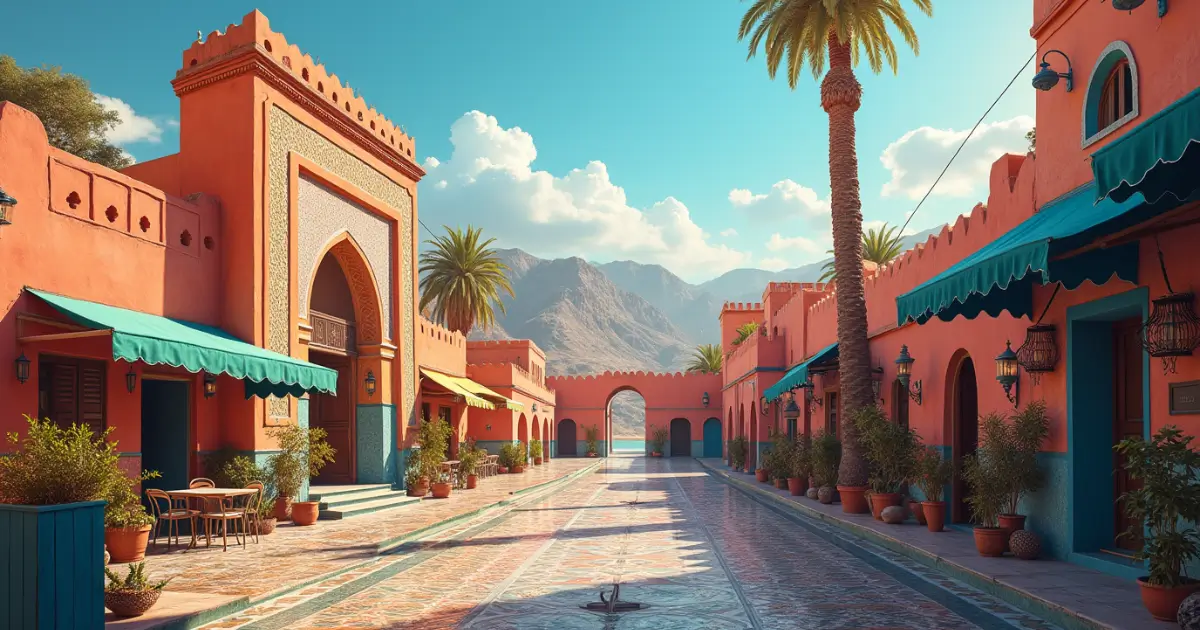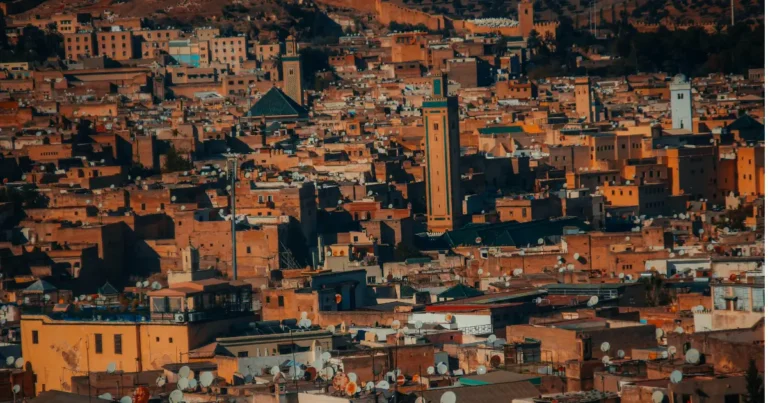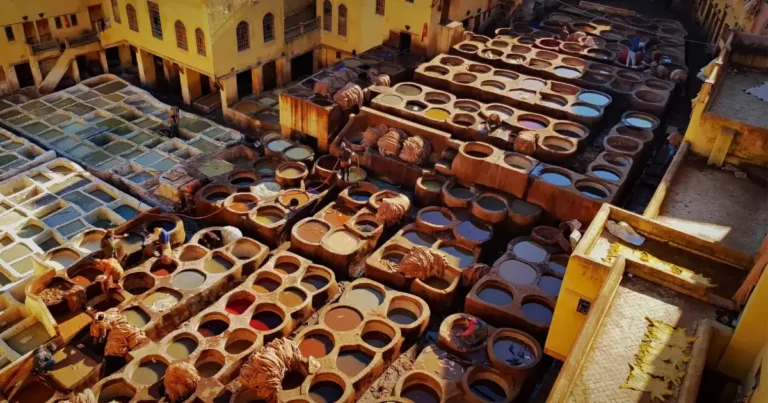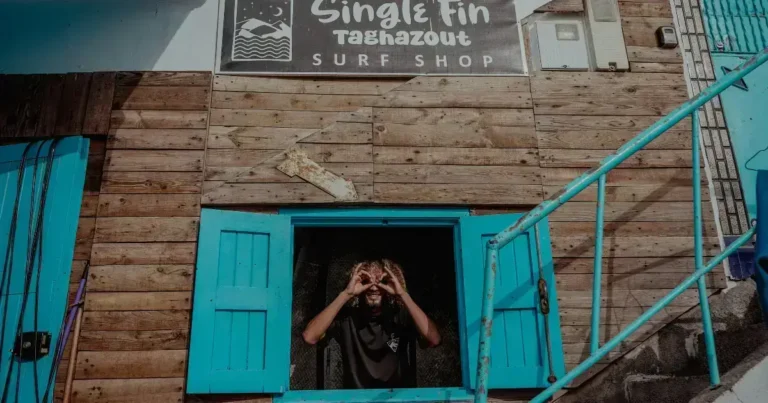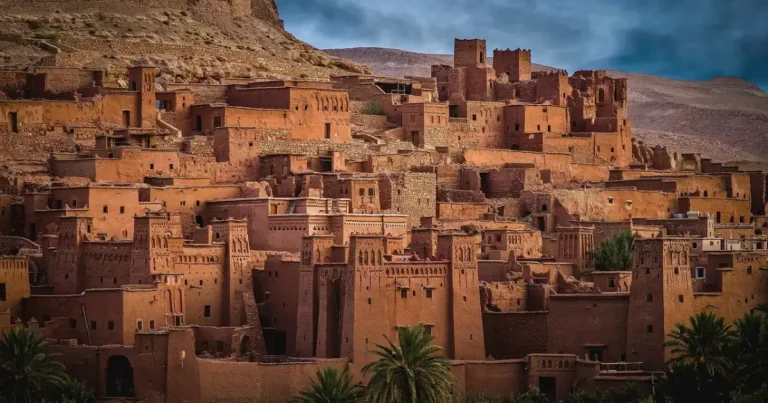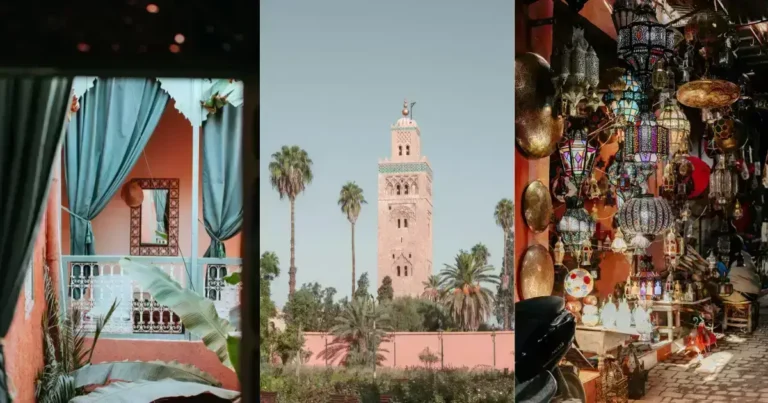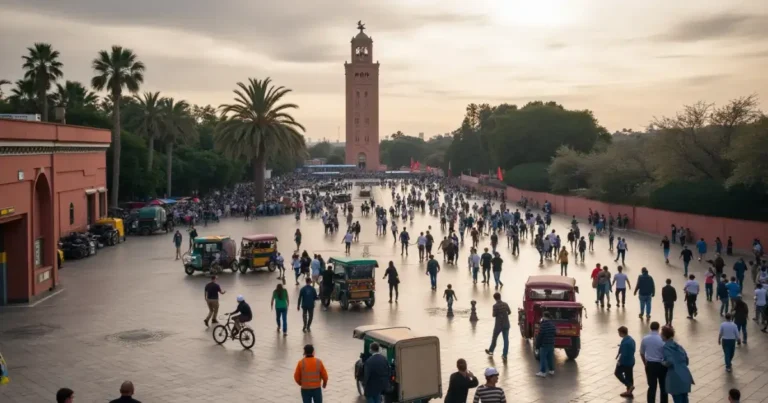Discover Morocco’s Crown Jewels: The Top 3 Cities To Visit For Culture, History & Magic
Morocco captivates travelers with its intoxicating blend of ancient traditions, vibrant markets, stunning architecture, and diverse landscapes. With so many incredible destinations within this North African gem, choosing where to focus your precious vacation time can feel overwhelming. If you’re planning your first Moroccan adventure or returning to explore more deeply, identifying the true must-visit cities in Morocco is essential.
This guide cuts through the confusion to reveal the definitive top 3 cities to visit in Morocco – the perfect trio that offers the most rewarding and diverse experiences this magical country has to offer. Based on years of Morocco travel expertise and feedback from thousands of travelers, we’ve identified the absolute standouts: the sensory whirlwind of Marrakech, the medieval labyrinth of Fes, and the ethereal blue streets of Chefchaouen.
Get ready to explore the magic of Marrakech, the soul of Fes, and the blue jewel of Chefchaouen – three destinations that showcase the best of Morocco through their cultural significance, unique atmospheres, excellent tourism infrastructure, and distinctly different experiences.
Why Just Three? Focusing Your Moroccan Adventure
Morocco boasts dozens of fascinating cities, towns, and villages – each with unique charm. However, trying to see too many destinations often results in a rushed, superficial experience. By focusing on the top 3 cities to visit in Morocco, you’ll have time to truly immerse yourself in each location, discover hidden gems beyond the obvious landmarks, and develop a deeper appreciation for what makes each city special.
Our Criteria: Selecting Morocco’s Best City Experiences
To definitively identify the top 3 cities to visit in Morocco, we evaluated candidates based on:
- Cultural Significance: Historical importance, architectural treasures, and authentic cultural experiences
- Unique Atmosphere: Distinctive character and ambiance that can’t be found elsewhere
- Tourist Infrastructure: Quality accommodation options, transportation connections, and visitor amenities
- Iconic Status: Recognition as quintessential Moroccan experiences
- Diversity of Experience: How well the cities complement each other to showcase different facets of Morocco
The Runners-Up & Why They Didn’t Make the Top 3
While our top three shine brightest for most travelers, several other contenders deserve honorable mentions:
Rabat: Morocco’s capital offers elegant administrative buildings, a picturesque kasbah, and a more relaxed atmosphere than our top picks. However, its somewhat subdued energy and fewer must-see attractions place it just outside the essential trio.
Essaouira: This charming coastal city delivers Atlantic breezes, Portuguese fortifications, and a laid-back artistic vibe. While magical, it represents a more specialized experience that complements our top three rather than replacing any of them.
Casablanca: Despite its famous name, Morocco’s largest city is primarily a commercial hub with fewer historical attractions beyond the magnificent Hassan II Mosque. Most travelers find our top three more rewarding for a first-time visit.
City #1: Marrakech – Sensory Overload & Unforgettable Energy
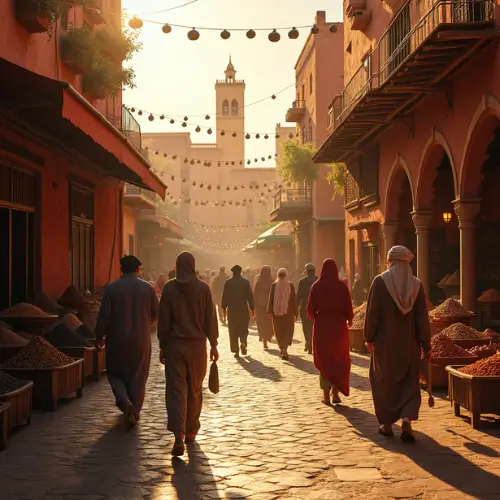
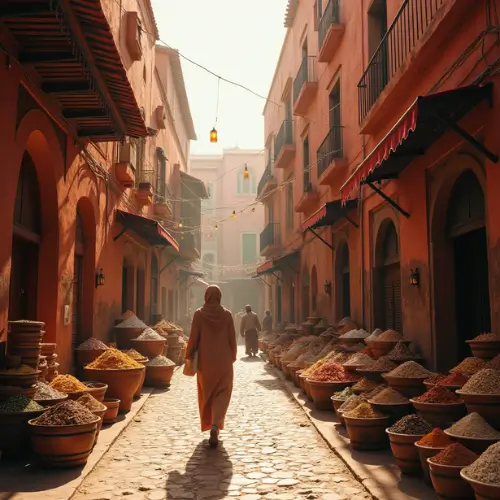
Why It Makes the Top 3:
Marrakech earns its spot as perhaps the most essential among the must-visit cities in Morocco through its unparalleled sensory immersion. The “Red City” serves as Morocco’s tourism epicenter, where ancient traditions and contemporary energy collide in spectacular fashion. From the moment you step into the medina (old city), you’re enveloped in a whirlwind of colors, sounds, scents, and textures that epitomizes the Moroccan experience many travelers seek.
The city’s iconic status is cemented by Djemaa el-Fna, the most famous public square in Africa and the beating heart of Marrakech. This UNESCO-recognized cultural space transforms throughout the day, culminating in an evening carnival of food stalls, storytellers, musicians, and performers that has unfolded nightly for centuries.
Beyond this unmissable spectacle, Marrakech’s network of atmospheric riads (traditional houses with interior courtyards), world-class museums, royal palaces, and bustling souks create a perfect introduction to Moroccan culture.
Must-Do Experiences:
- Djemaa el-Fna: Witness the square’s transformation from day to night, sampling fresh orange juice by day and joining locals at food stalls after sunset. Tip: Visit multiple times at different hours to fully appreciate its changing character.
- Koutoubia Mosque: Marvel at Morocco’s largest mosque’s stunning minaret (exterior only for non-Muslims), especially beautiful when illuminated at night. Tip: The gardens surrounding the mosque offer excellent photo opportunities and a peaceful retreat.
- Jardin Majorelle: Explore the electric-blue villa and meticulously designed gardens created by French painter Jacques Majorelle and later saved by fashion designer Yves Saint Laurent. Tip: Purchase tickets online to avoid long lines, especially during peak season.
- Bahia Palace: Wander through ornate rooms and peaceful courtyards of this 19th-century masterpiece showcasing the height of Moroccan craftsmanship. Tip: Hire a guide to explain the architectural details and historical significance.
- Souk Exploration: Lose yourself in the maze-like markets, where artisans craft everything from intricate metalwork to vibrant textiles. Tip: Penetrate beyond the tourist-oriented main paths to discover more authentic workshops and better prices.
- Riad Stay: Experience traditional Moroccan hospitality by staying in a restored riad in the medina rather than a conventional hotel. Tip: Book one with a rooftop terrace for magical sunrise or sunset views over the city.
- Cooking Class: Learn to prepare authentic Moroccan dishes like tagine or couscous, often including a market visit to select ingredients. Tip: Classes at Amal Women’s Center support a worthy social enterprise while delivering excellent instruction.
Insider Tips:
- Visit Djemaa el-Fna around 4-5 PM to witness its transformation, but return after dinner (around 9 PM) when it reaches peak energy.
- Navigate the souks by remembering one or two major landmarks rather than trying to follow a specific route – getting slightly lost is part of the experience.
- For authentic food beyond tourist traps, try Mechoui Alley near Djemaa el-Fna for slow-roasted lamb, or explore food stalls in Mellah (the old Jewish quarter).
- Riads in the Kasbah or Bab Doukkala neighborhoods offer more tranquility while remaining within easy walking distance of major attractions.
Who is Marrakech Best For?
Marrakech excels for culture seekers, shoppers, photography enthusiasts, food lovers, and first-time visitors to Morocco seeking that quintessential sensory immersion. Its well-developed tourism infrastructure also makes it ideal for travelers who want exotic experiences with modern comforts available.
Quick Look: Marrakech
- Vibe: Energetic, sensory, photogenic
- Days Needed: 3-4
- Best For: First-time visitors, shoppers, photographers, culture seekers
City #2: Fes – Stepping Back in Time in the Cultural Capital
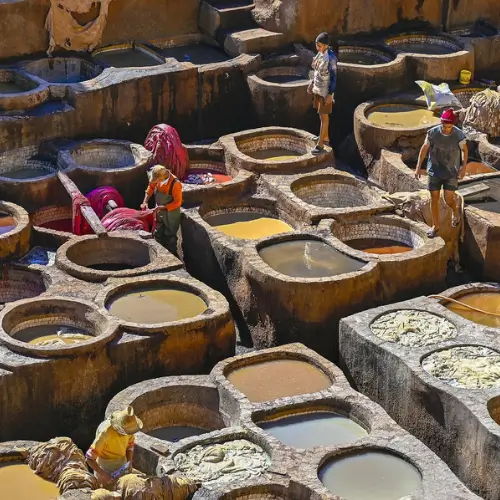
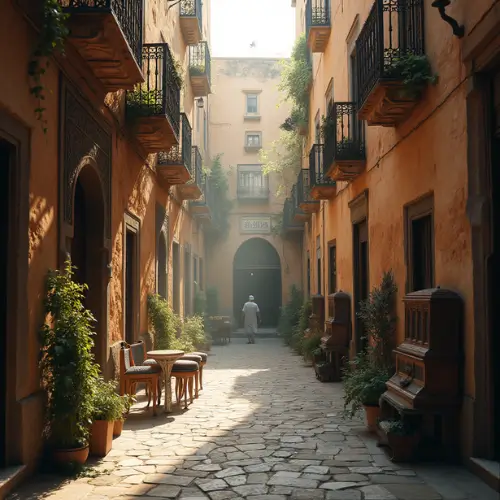
Why It Makes the Top 3:
If Marrakech is Morocco’s heart, Fes is undoubtedly its soul. No list of the top 3 cities to visit in Morocco would be complete without this intellectual and spiritual center that houses the world’s largest car-free urban area. Stepping into Fes el Bali (the ancient medina) feels like traveling back to the Middle Ages, with its 9,000+ narrow derbs (alleyways) forming a seemingly infinite maze that harbors hidden treasures around every corner.
Founded in the 8th century, Fes has preserved its status as Morocco’s cultural capital, where ancient traditions of scholarship and craftsmanship remain vibrantly alive. Here, artisans still practice centuries-old techniques in pottery, metalwork, woodcarving, and leatherworking, often in the same workshops their ancestors used.
The city’s religious significance adds another layer of importance, with the venerable Al-Qarawiyyin – founded in 859 and recognized as the world’s oldest continuously operating university – standing as a testament to Morocco’s profound intellectual heritage.
Must-Do Experiences:
- Fes el Bali Exploration: Navigate the ancient medina’s labyrinthine streets, discovering workshops, markets, mosques, and madrasas. Tip: For your first visit, hire a licensed guide for half a day to orient yourself and learn about the medina’s history before exploring independently.
- Al-Attarine Madrasa: Admire the exquisite zellige tilework, carved cedar, and stucco decoration of this 14th-century theological college. Tip: Visit in the morning when light conditions are ideal for photographing the courtyard.
- Bou Inania Madrasa: Visit this rare religious building open to non-Muslims, featuring some of Morocco’s finest architectural craftsmanship. Tip: Look for the unique green-tiled minaret and restored original wooden water clock outside.
- Chouara Tannery: Witness traditional leather production methods virtually unchanged since medieval times from one of the leather shops overlooking the dyeing pits. Tip: Visit in the morning for the most active work period, and accept the mint sprig offered to counter the strong smells.
- Fondouks (Caravanserais): Explore these historic merchant inns where traders stayed with their goods, many now restored as craft centers or cultural spaces. Tip: Don’t miss Fondouk Nejjarine, which houses an excellent woodworking museum.
- Artisan Workshops: Watch craftspeople creating traditional wares using ancient techniques in tiny workshops throughout the medina. Tip: The metal workers’ district near Place Seffarine offers particularly photogenic scenes of coppersmiths hammering pots by hand.
Insider Tips:
- For an authentic hammam (traditional bath) experience without the tourist markup, try local neighborhood establishments like Hammam Mernissi.
- Find spectacular panoramic views of the medina from the Merenid Tombs hill just before sunset when the call to prayer creates an unforgettable soundtrack.
- Restaurant Dar Hatim offers exceptional home-cooked Fassi cuisine in a family home setting, far superior to touristy medina options.
- When shopping for crafts, venture to specialized districts like Ain Nokbi for authentic ceramics from generational artisans rather than tourist shops.
Who is Fes Best For?
Fes rewards history enthusiasts, architecture lovers, cultural purists, photographers, and travelers seeking authentic artisanal experiences. It’s perfect for those willing to embrace a less polished but more genuine version of Morocco than Marrakech presents.
Quick Look: Fes
- Vibe: Ancient, authentic, spiritual
- Days Needed: 2-3
- Best For: History buffs, craft enthusiasts, photographers, cultural immersion seekers
City #3: Chefchaouen – Morocco’s Enchanting Blue Mountain City
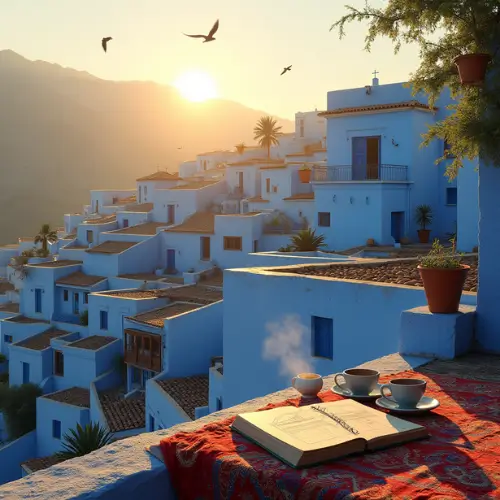
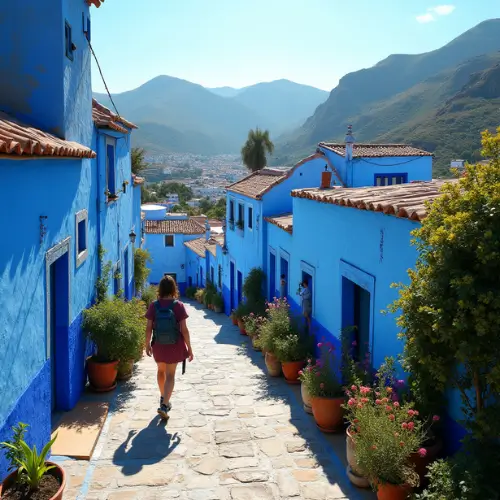
Why It Makes the Top 3:
Completing our trio of must-visit cities in Morocco is the visually stunning Chefchaouen, an otherworldly mountain town that provides the perfect counterpoint to the imperial cities. Known worldwide for its mesmerizing blue-washed buildings, “the Blue Pearl” creates an almost dreamlike atmosphere that captivates visitors from their first glimpse.
Beyond its Instagram-famous aesthetics, Chefchaouen offers a drastically different pace and atmosphere from our other top picks. Nestled in the Rif Mountains, the city’s cooler climate and relaxed ambiance provide welcome respite after the intensity of Marrakech or Fes. The blend of Moroccan and Andalusian influences creates a unique cultural character, with its own distinctive cuisine, architecture, and traditions.
Chefchaouen’s natural setting adds another dimension to the experience, with hiking opportunities and mountain landscapes that showcase a side of Morocco many visitors miss when focusing solely on urban destinations.
Must-Do Experiences:
- Blue Street Wandering: Lose yourself in the medina’s azure alleyways, staircases, and doorways, discovering perfect photo opportunities and charming corners. Tip: The area around Bab Souk offers particularly picturesque blue panoramas with fewer crowds.
- Plaza Uta el-Hammam: Linger in this tree-lined main square where locals gather, overlooked by the rust-colored Kasbah and Grand Mosque. Tip: The cafés on the eastern side offer the best people-watching vantage points.
- Kasbah Museum: Explore this well-preserved 15th-century fortress housing small ethnographic exhibits and offering access to a tower with panoramic views. Tip: The gardens inside provide a peaceful retreat from the often-crowded medina streets.
- Spanish Mosque Sunset: Hike the 30-minute trail to this abandoned mosque on a hilltop east of town for the ultimate sunset view over the blue city. Tip: Begin your ascent about 90 minutes before sunset to secure a prime viewing spot and allow time for photography.
- Ras El Maa Waterfall: Visit this small waterfall at the northeastern edge of town where local women traditionally wash clothes and socialize. Tip: Morning hours offer glimpses of these disappearing traditional practices.
Insider Tips:
- For blue street photography without crowds, explore before 9 AM, when day-trippers haven’t yet arrived from Fes or Tangier.
- The best photo locations beyond the overphotographed main streets include Rue Kharrazine and the residential areas climbing the eastern hillside.
- Local Rif mountain cheese and fresh rainbow trout are regional specialties worth seeking out at local-oriented restaurants.
- Consider a day trip to Akchour’s beautiful waterfalls and God’s Bridge natural arch, about 45 minutes from town by grand taxi.
Who is Chefchaouen Best For?
Chefchaouen delights photographers, relaxation seekers, hikers, and travelers needing a peaceful contrast to Morocco’s busier imperial cities. It’s also perfect for those seeking unique cultural souvenirs, with distinctive local handicrafts including woolen garments and bamboo weavings.
Quick Look: Chefchaouen
- Vibe: Tranquil, photogenic, refreshing
- Days Needed: 2
- Best For: Photographers, nature lovers, relaxation seekers
Marrakech vs. Fes vs. Chefchaouen: Which is Right for You?
| Factor | Marrakech | Fes | Chefchaouen |
|---|---|---|---|
| Vibe/Atmosphere | Energetic, bustling, theatrical | Traditional, authentic, intense | Relaxed, picturesque, peaceful |
| Main Attractions | Djemaa el-Fna, palaces, gardens | World’s largest medieval medina, religious sites, traditional crafts | Blue streets, mountain views, photography |
| Best For | First-timers, shoppers, luxury seekers | History buffs, cultural purists, craft enthusiasts | Photographers, relaxation seekers, hikers |
| Ease of Navigation | Moderate – confusing but manageable | Challenging – extremely complex layout | Easy – small and walkable |
| Pace | Fast and stimulating | Moderate to fast | Slow and relaxed |
| Shopping Focus | Wide variety, both traditional and contemporary | Traditional crafts with authentic production | Textiles, weavings, mountain herbs |
| Recommended Stay | 3-4 days | 2-3 days | 2 days |
How to Visit Morocco’s Top 3 Cities: A Sample Flow
Suggested Itinerary Outline:
Days 1-4: Marrakech
- Arrive at Marrakech Menara Airport
- Explore the medina, souks, and major sites
- Consider a day trip to the Atlas Mountains or Essaouira if time allows
Days 5-7: Fes
- Travel from Marrakech to Fes (train, approximately 7-8 hours)
- Discover the medieval medina and crafts districts
- Explore nearby Meknes or Volubilis as a day trip option
Days 8-9: Chefchaouen
- Travel from Fes to Chefchaouen (CTM bus, approximately 4 hours)
- Wander the blue streets and soak in the relaxed atmosphere
- Hike to the Spanish Mosque viewpoint
Day 10: Departure
- Travel to your departure airport (options include returning to Fes, continuing to Tangier, or Casablanca depending on your flight arrangements)
Getting Between the Cities:
Marrakech to Fes:
- Train: Most comfortable option, approximately 7-8 hours, departures throughout the day (90-150 MAD)
- CTM/Supratours Bus: Slightly cheaper but less comfortable, similar duration (80-120 MAD)
Fes to Chefchaouen:
- CTM Bus: Direct service, approximately 4 hours (75-90 MAD)
- Grand Taxi: Faster but more expensive unless sharing with others (around 600 MAD for the entire taxi)
Chefchaouen to Exit Points:
- To Tangier: CTM bus (2.5 hours) for flights from Tangier or ferry to Spain
- To Fes: Return the way you came for flights from Fes
- To Casablanca: Long journey requiring connections, best broken up with stops
Best Time to Visit These Top 3 Cities in Morocco:
The ideal times to visit Morocco’s top cities are during the spring (March-May) and fall (September-November) when temperatures are pleasant for exploration. Summer brings intense heat to Marrakech and Fes, though Chefchaouen remains more comfortable due to its elevation. Winter can be rainy and surprisingly cold, especially in Fes and Chefchaouen, though Marrakech stays milder.
Essential Morocco Travel Tips:
- Currency: The Moroccan dirham (MAD) is a closed currency; exchange money upon arrival at official bureaus or ATMs rather than before your trip.
- Basic Phrases: Learn a few Arabic or French greetings like “shukran” (thank you) and “la shukran” (no thank you) to navigate interactions more smoothly.
- Safety/Scams: Beware of unofficial “guides” who approach you uninvited; politely decline their assistance and arrange guides through official channels.
- Dress Code: Respect local culture by dressing modestly, particularly in Fes, which is more conservative than tourist-oriented Marrakech.
- Haggling: Expected in souks, but conduct it with good humor and respect. Begin at roughly 40% of the initial asking price and work toward a mutually agreeable figure.
Your Unforgettable Moroccan Trio Awaits
Focusing your Moroccan adventure on these top 3 cities to visit in Morocco – Marrakech, Fes, and Chefchaouen – promises an unforgettable journey through the country’s most distinctive and rewarding destinations. Each city offers a completely different facet of Moroccan culture, architecture, and atmosphere, creating a perfectly balanced introduction to this magnificent North African kingdom.
From the sensory whirlwind of Marrakech’s markets to the medieval labyrinth of Fes and the tranquil blue streets of Chefchaouen, this trio showcases Morocco’s remarkable diversity while remaining manageable within a 10-day itinerary.
Which of these three must-visit cities in Morocco most captures your imagination? Are you drawn to Marrakech’s vibrant energy, Fes’s ancient authenticity, or Chefchaouen’s ethereal blue charm? Share your thoughts in the comments below, and download our free Morocco Top 3 Cities Checklist to help plan your perfect Moroccan adventure!

